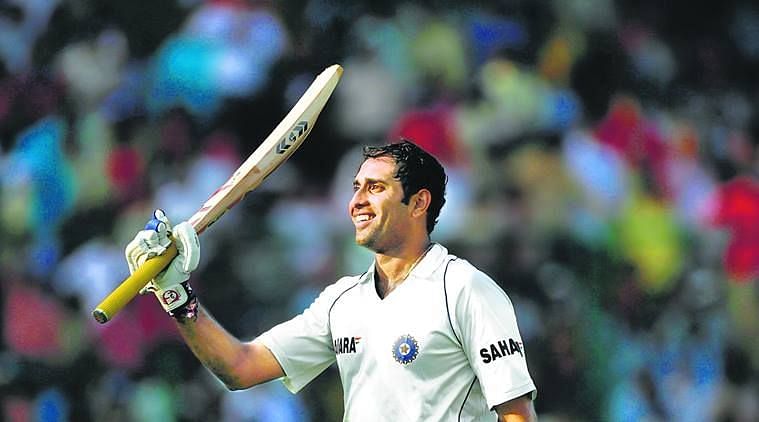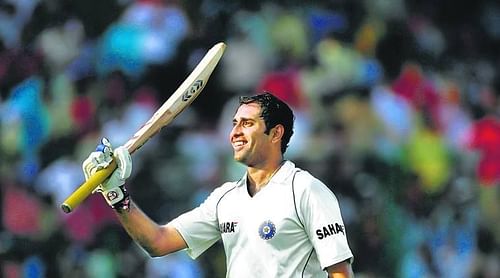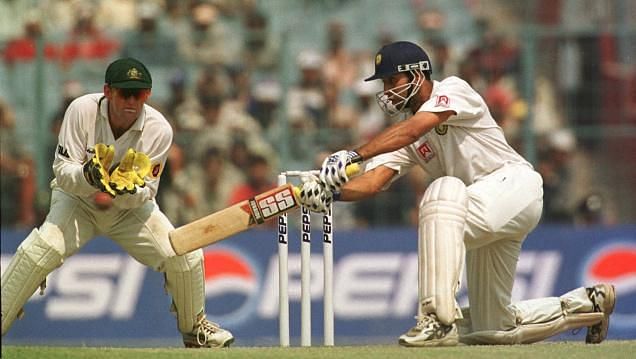
Did Ganguly's India sabotage Laxman's Career?

Impact Index is a modern-day revolutionary statistics system. Honed by Jaideep Varma and later joined by Soham Sarkhel and Nikhil Narain, it constructs a hitherto unexplored view of the gentleman's game - delving into the unknowns that lie beneath the scorecard, beneath the circumstance, beneath popular supposition.
What it banks on, for this, is the very idea that every number, is a powerful yet simple idea; the idea that statistics is not soporific trivia, it is the stuff of history.
Within their headquarters in Mumbai, an age-old story of frustration and lament is doing the rounds. VVS Laxman was not a contemporary bottom-handed genius like Virat Kohli. Nor was he a three-dimensional cricketer, who would on one day send jitters down the spines of the opposition in coloured clothing and on the other, arrive with the placidity of Vikram Seth's Melon King to murder the patience of a red ball.
He had his strengths and weaknesses, which he was perfectly aware of, and yet, he finds himself amongst some of the greatest of all time to have played our sport wearing the whites.
However, if we take a minimum of forty Tests, India's highest Impact batsmen, according to Impact Index, turn out to be Rahul Dravid, Sachin Tendulkar, Sunil Gavaskar, and GR Vishwanath, respectively. Curiously, Navjot Singh Sidhu ranks fifth, followed by Mohammad Azharuddin and Virender Sehwag.
It is unsettling that Laxman comes after them. Enough has been said about his epic 281 not out, which is inevitably going to be part of every single piece written about him. His career average of 45.97 is misleading; because much like Alastair Cook, much like MS Dhoni, he batted for the major part of his career in some of the toughest spots to bat for a specialist batsman.
And yet, at the fall of the fourth Indian wicket, when he came out to the centre and took his guard, he never complained of the fact that being a Test match specialist, he was most vulnerable to scapegoating, which was very often what happened with him.

In a line-up dominated by the likes of Tendulkar, Dravid, and Sehwag, Laxman was always the support artist. His strengths and weaknesses were never in the team's agenda, for he was always making way for Tendulkar to bat at 4 and Dravid at 3.
In fact, in the former part of his career, he was often asked to open the batting for India, which was a disaster -- an average of 24.07 in his first 16 Tests, all at the top of the order, was one of the most inauspicious starts he could've got to his Test career.
But then came that 281*, which instantly changed him into a household name, being discussed over chais, parathas and pakoras. Crackers were burnt and cricket bats purchased -- a new drive of euphoria had enveloped Indian cricket, which all the while until then, was reeking of the abominable scandals of match-fixing.
What Laxman's knock did, which was incidentally unrecorded by statisticians, was to end a two-year recession for petty shopkeepers trading in cricket equipment.

His other two 'Series Defining performances', as recorded by Impact Index, were in 2010, both of them away from home. One was a dogged 103 not out, seeing the team through a 258 run chase against the mighty Lankans comprising of Muralitharan, Herath, and Vaas, after arriving at the middle when the scorecard read 62-4.
The second, in South Africa in December, was a third-innings effort, in which he scored a famous 96 in a low-scoring encounter, securing the team a formidable lead after India were precariously placed at 56-4.
Laxman played one of his finest innings, to be the last man out, as India won the match by 87 runs and squared the series 1-1, the only time they have managed to do so in the Rainbow Nation.
Ignore the fluency and the grace with which he made his runs, but there was something about the charisma that VVS Laxman oozed that made him irresistible. He was the old school cricket virtuoso who could defend ball after ball after ball, but the class and the poise he radiated even when merely leaving a ball, was what generated the intrigue around him. Former India opener and commentator, Aakash Chopra agrees:
'VVS Laxman was one of those players who would hit you for a four and you wouldn't feel the hurt. He'd cut you and you wouldn't bleed. I remember playing against him in a Duleep Trophy game where he scored 175 or so for South Zone; from time to time, I found myself applauding the shots he was playing, even though they were coming against my own team. There was some kind of poetry in his batting; he'd hit you for three fours and you wouldn't realize you'd been taken for 12 runs in an over.'
The fact, as mentioned earlier, was that VVS Laxman was an incredibly unlucky player. First, he found himself being asked to open the batting after he'd saved India a blush on his debut by top-scoring with an impressive 51, batting for 3 hours at No.6.
Despite failing miserably, he was once again asked to do so later in 2007, in the dark ages of Indian cricket when Greg Chappell was at the helm of affairs. As the story goes, he politely turned down the offer citing his hiccups against the new ball in the initial part of his career.
Chappell's response, in the presence of the entire squad, was cautioning Laxman to be careful, because it was extremely hard making a comeback at the age of 33.